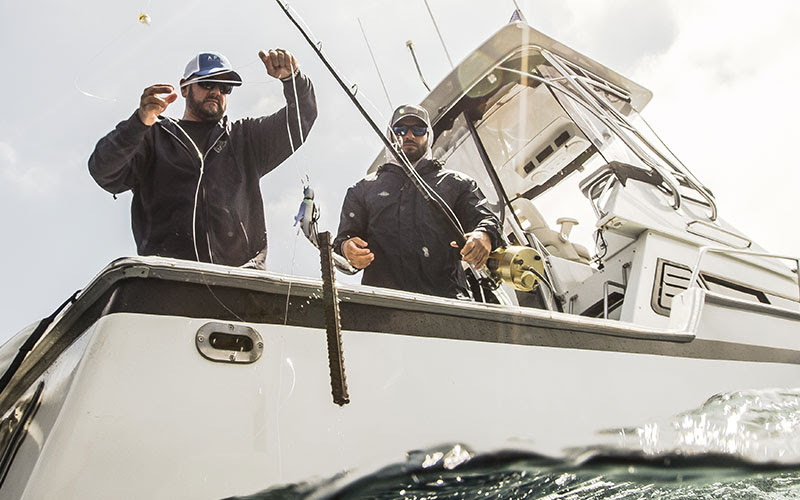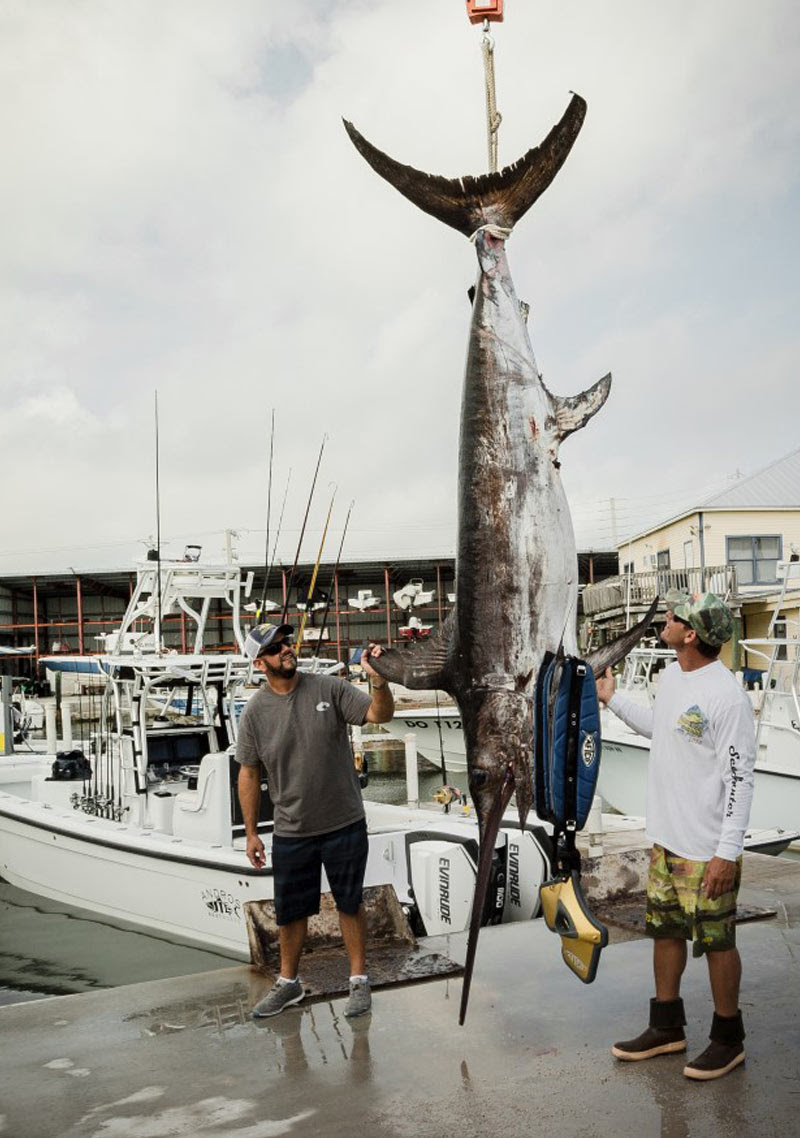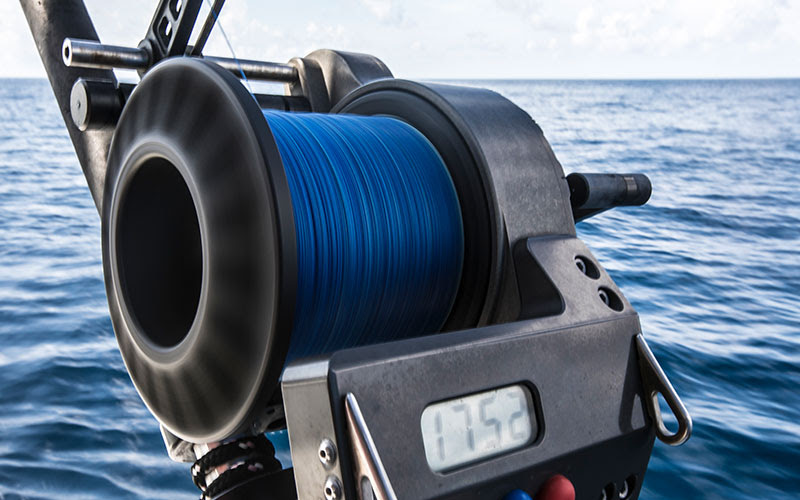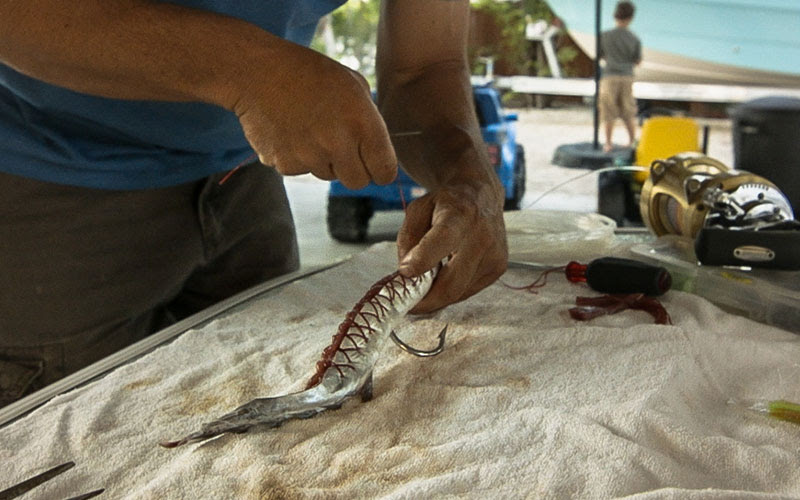As a result, the long-standing way to catch them was fishing in the dark when they were more accessible to anglers. Catching a swordfish during the day is a relatively recent trend, starting on the Florida coast and migrating to California, as anglers began to learn ways to target them. Some of the pioneer anglers have discovered ways to catch swords by sportfishing methods when the sun is high.
California's Ali Hussainy, the co-founder of BD Outdoors and host of Local Knowledge, and Captain Colin F. Byrd of the Mexican Gulf Fishing Company of Venice, Louisiana, share their wisdom on how they have success with daytime swordfish.
A New West Coast Fishery
Fishing for swordfish in California is nothing new, but the ability to target them during the daytime with success is very recent. Hussainy has helped pioneer daytime swordfishing in California and cracked the code after one fundamental discovery three years ago.
"The swordfish is the king of the sea and nobody can dispute that," says Hussainy. "But catching them on a rod and reel during the day was like catching a unicorn. We started hearing whispers of them being caught off of the California coast and in 2020, it started happening and now, everyone is going nuts for it because you can do it relatively close to the beach."
"Their data told them that the majority of the fish are in 800 to 1000 feet off of our coast," adds Hussainy. "In Florida, it could be 1800 to 2500 feet of water. We were fishing too deep and it showed that our fishery is much different. The majority of baitfish are in that depth range, and predators will always 'follow the groceries' as I like to say."
Hussainy begins each day on the water in traditional areas commercial swordfish have used for years on seamounts and ridges and finds some of their best fishing late in the summer and into fall.
"There are some great areas very close to San Diego," he says. "The first thing we'll do is look for baitfish in those areas and will drop right to them. September and October are excellent months, but we are just scratching the surface on this fishery and it is always evolving."
Gulf of Mexico Swords
The Gulf of Mexico, especially Venice, Louisiana, is a fishermen's paradise with plentiful fish and many different species. But, it is also a unique fishery that is influenced by currents and water clarity.
"Fishing for swordfish during the day originated in Florida and they have also been doing it for a long time in Puerto Rico and other places," says Byrd. "We used a lot of trial and error and blended a little bit of what everyone else has been doing to catch them and started to figure out our fishery. The thing we found was that water conditions are the biggest key."
"South Florida has pretty clean water all of the time, but our waters can get dirty fast," adds Byrd. "Swordfish mainly feed at night and if they don't come to the surface at night in an area, they won't be there in the day, so we have to move around a lot. We'll catch them from 1,000 to 1,900 feet and that depends on the thermocline, which is our starting point."
Byrd and the other Captains now regularly catch swordfish in the 180 pound range and see big fish over 300 pounds at times. It is something that they can do year-round.
"Fishing for swordfish used to be setting some lines out at night, cook a steak, and hang out with your buddies," says Byrd. "You'd turn on the radio and wait for a bite. It has become a major part of the guide business and people are starting to know us for swordfishing during the daytime and are booking trips. We've smacked them in February, summer is always good, and we've caught them into November; we are pretty fortunate to have this fishery."
Gearing Up
While both of their fisheries are vastly different, both Hussainy and Byrd use somewhat similar methods to target swordfish during the day. Because of the depths they need to target, having the right equipment is vital.
Both agree that having a reel capable of handling thousands of yards of line and a rod capable of battling a giant fish for hours is essential.
"You also want the rod to have a soft tip because the bites are so subtle with that much line out," says Hussainy.
"The number one reason we trust Threadlock is because it slices better than any other line I have used," he adds. "It also lays flat on the reel so that you can add more line on those big reels. That is so important because once in a while, you will break off on the bottom and if you lose all of your line, that reel is done for the day. With more line spooled, you are still good to go."
Hussainy builds wind-on fluorocarbon leaders with anywhere from 60 to 100 feet of 200 pound Seaguar Fluoro Premier Big Game fluorocarbon leader.
"The heavier line helps prevent chaffing and breaking off those big fish," he says. "We find a lot of fish get foul hook on their pelvic fins and the durability of the line gives us the confidence it will hold up."
"Our leaders are generally pretty short and between 50 and 80 feet or maybe up to 100 feet," says Byrd. "We used to fish with 300 pound mono and would drift all day. Now we drop down fluorocarbon and get bites immediately. You have to remember swordfish have eyeballs as big as your fist and the invisibility of fluorocarbon is huge."
Both utilize heavy lead weights and primarily stitched squid or belly strips.
Hussainy uses the same stitched bait and lead setup and shared a little tip to capitalize on more bites.
"We like to tease 'em and take the bait away from them if we get a light bite," he says. "We will free spool the bait to simulate a bait getting away from them. That's a little trick we learned from the Florida guys and it helps since swordfish will slash at a bait a lot of times."
Copyright © 2013-2025 WesternBass.com ®











 Advertising
Advertising